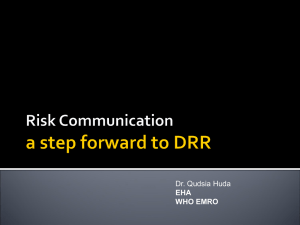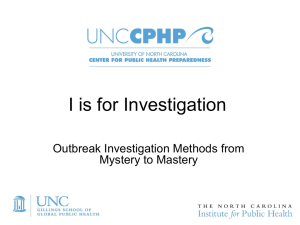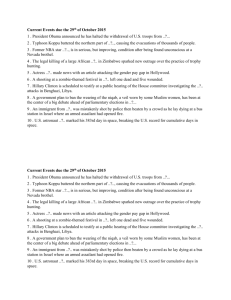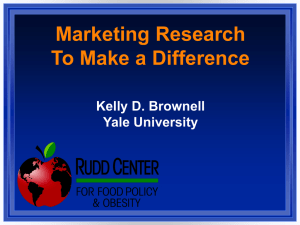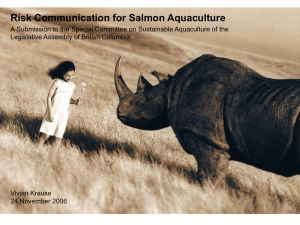Introduction to Risk Perception
advertisement
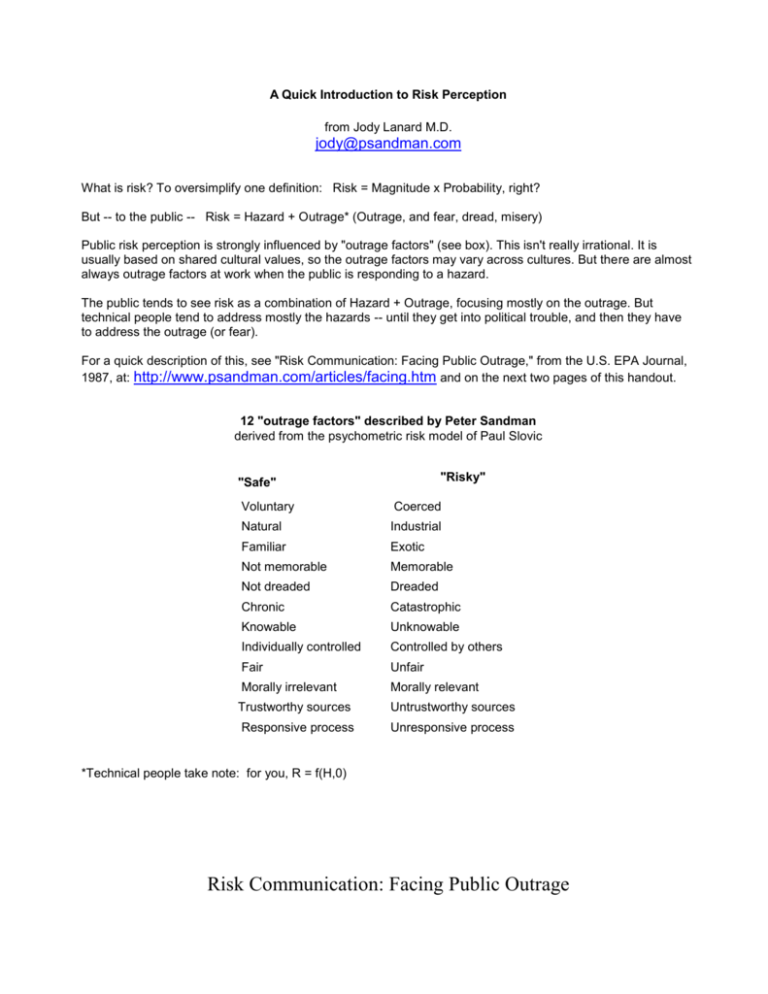
A Quick Introduction to Risk Perception from Jody Lanard M.D. jody@psandman.com What is risk? To oversimplify one definition: Risk = Magnitude x Probability, right? But -- to the public -- Risk = Hazard + Outrage* (Outrage, and fear, dread, misery) Public risk perception is strongly influenced by "outrage factors" (see box). This isn't really irrational. It is usually based on shared cultural values, so the outrage factors may vary across cultures. But there are almost always outrage factors at work when the public is responding to a hazard. The public tends to see risk as a combination of Hazard + Outrage, focusing mostly on the outrage. But technical people tend to address mostly the hazards -- until they get into political trouble, and then they have to address the outrage (or fear). For a quick description of this, see "Risk Communication: Facing Public Outrage," from the U.S. EPA Journal, 1987, at: http://www.psandman.com/articles/facing.htm and on the next two pages of this handout. 12 "outrage factors" described by Peter Sandman derived from the psychometric risk model of Paul Slovic "Risky" "Safe" Voluntary Coerced Natural Industrial Familiar Exotic Not memorable Memorable Not dreaded Dreaded Chronic Catastrophic Knowable Unknowable Individually controlled Controlled by others Fair Unfair Morally irrelevant Morally relevant Trustworthy sources Untrustworthy sources Responsive process Unresponsive process *Technical people take note: for you, R = f(H,0) Risk Communication: Facing Public Outrage Peter M. Sandman The Peter Sandman Risk Communication Website www.psandman.com 59 Ridgeview Road Princeton, New Jersey, 08540 USA peter@psandman.com Published in the U.S.Environmental Protection Agency Journal, Nov 1987:21-22. If you make a list of environmental risks in order of how many people they kill each year, then list them again in order of how alarming they are to to the general public, the two lists will be very different. The first list will also be very debatable, of course; we don‘t really know how many deaths are attributable to, say, geological radon or toxic wastes. But we do know enough to be nearly certain that radon kills more Americans each year than all our Superfund sites combined. Yet, as Milton Russell points out (see preceding article), millions who choose not to test their homes for radon are deeply worried about toxic wastes. The conclusion is inescapable: the risks that kill you are not necessarily the risks that anger and frighten you. To bridge the gap between the two, risk managers in government and industry have started turning to risk communication. They want help convincing the public that one part per million of dimethylmeatloaf in the air or water may not be such a serious hazard after all. Sometimes they want this help even when one part per million of dimethylmeatloaf is a serious hazard, hoping that clever risk communication can somehow replace effective risk management. But often the best evidence suggests that the dimethylmeatloaf really does endanger our health less than, say, eating peanut butter (not to mention the really big hazards, like cigarette smoking). Can risk communication get people to ease off on the dimethylmeatloaf and worry instead about their peanut butter consumption? No. What risk communication can do is help risk managers understand why the public properly takes dimethylmeatloaf more seriously than peanut butter. This understanding, in turn, can lead to changes in dimethylmeatloaf policy that will help bring the public and expert assessments of the risk closer together. The core problem is a definition. To the experts, risk means expected annual mortality. But to the public (and even the experts when they go home at night), risk means much more than that. Let's redefine terms. Call the death rate (what the experts mean by risk) “hazard.” Call all the other factors, collectively, “outrage.” Risk, then, is the sum of hazard and outrage. The public pays too littleattention to hazard; the experts pay absolutely no attention to outrage. Not surprisingly, they rank risks differently. Risk perception scholars have identified more than 20 “outrage factors.” Here are a few of the main ones: Voluntariness: A voluntary risk is much more acceptable to people than a coerced risk, because it generates no outrage. Consider the difference between getting pushed down a mountain on slippery sticks and deciding to go skiing. Control: Almost everybody feels safer driving than riding shotgun. When prevention and mitigation are in the individual‘s hands, the risk (though not the hazard) is much lower than when they are in the hands of a government agency. Fairness: People who must endure greater risks than their neighbors, without access to greater benefits, are naturally outraged — especially if the rationale for so burdening them looks more like politics than science. Greater outrage, of course, means greater risk. Process: Does the agency come across as trustworthy or dishonest, concerned or arrogant? Does it tell the community what‘s going on before the real decisions are made? Does it listen and respond to community concerns? Morality: American society has decided over the last two decades that pollution isn‘t just harmful — it‘s evil. But talking about cost-risk tradeoffs sounds very callous when the risk is morally relevant. Imagine a police chief insisting that an occasional childmolester is an “acceptable risk.” Familiarity: Exotic, high-tech facilities provoke more outrage than familiar risks (your home, your car, your jar of peanut butter). Memorability: A memorable accident — Love Canal, Bhopal, Times Beach — makes the risk easier to imagine, and thus (as we have defined the term) more risky. A potent symbol — the 55-gallon drum — can do the same thing. Dread: Some illnesses are more dreaded than others; compare AIDS and cancer with, say, emphysema. The long latency of most cancers and the undetectability of most carcinogens add to the dread. These “outrage factors” are not distortions in the public‘s perception of risk. Rather, they are intrinsic parts of what we mean by risk. They explain why people worry more about Superfund sites than geological radon, more about industrial emissions of dimethylmeatloaf than aflatoxin in peanut butter. There is a peculiar paradox here. Many risk experts resist the pressure to consider outrage in making risk management decisions; they insist that “the data” alone, not the “irrational” public, should determine policy. But we have two decades of data indicating that voluntariness, control, fairness, and the rest are important components of our society‘s definition of risk. When a risk manager continues to ignore these factors — and continues to be surprised by the public‘s response of outrage — it is worth asking just whose behavior is irrational. The solution is implicit in this reframing of the problem. Since the public responds more to outrage than to hazard, risk managers must work to make serious hazards more outrageous, and modest hazards less outrageous. Recent campaigns against drunk driving and sidestream cigarette smoke provide two models of successful efforts to increase public concern about serious hazards by feeding the outrage. Similarly, to decrease public concern about modest hazards, risk managers must work to diminish the outrage. When people are treated with fairness and honesty and respect for their right to make their own decisions, they are a lot less likely to overestimate small hazards. At that point risk communication can help explain the hazard. But when people are not treated with fairness and honesty and respect for their right to make their own decisions, there is little risk communication can do to keep them from raising hell — regardless of the extent of the hazard. Most of us wouldn‘t have it any other way. Diffusion in time and space: © 2004 By Peter M. Sandman Hazard A kills 50 anonymous people a year across the country. Hazard B has one chance in 10 of wiping out its neighborhood of 5,000 people sometime in the next decade. Risk assessment tells us the two have the same expected annual mortality: 50. “Outrage assessment” tells us A is probably acceptable and B is certainly not.
